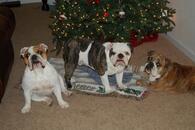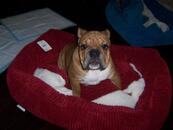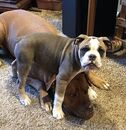helsonwheels
Well-known member
It has been said that if you give your English bulldog puppy 1/2 a child’s dose of Benedryl 1 hour before and an hour after their vaccinations they will never pop a cherry eye. Benedryl is always great to have on hand for bee stings or any allergic reactions.… 






